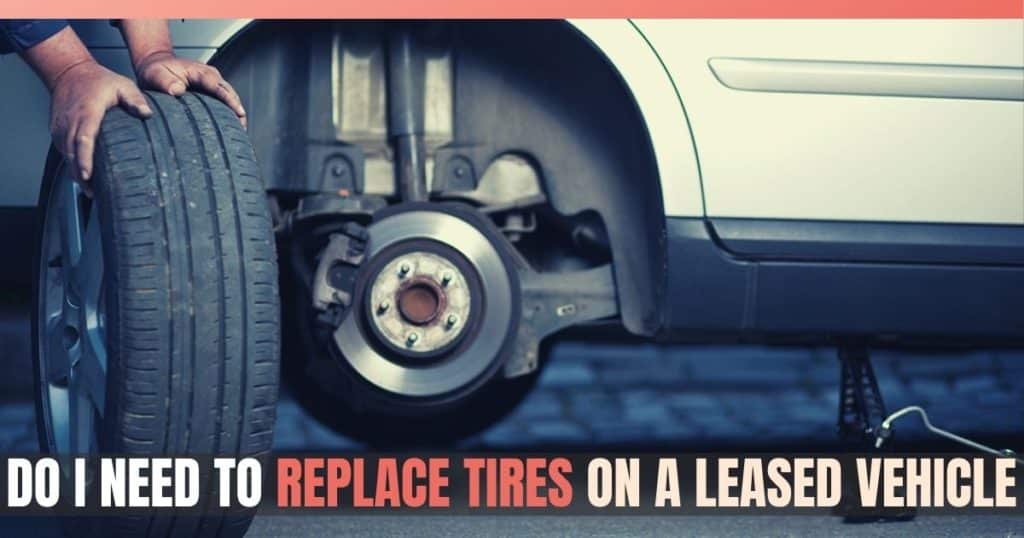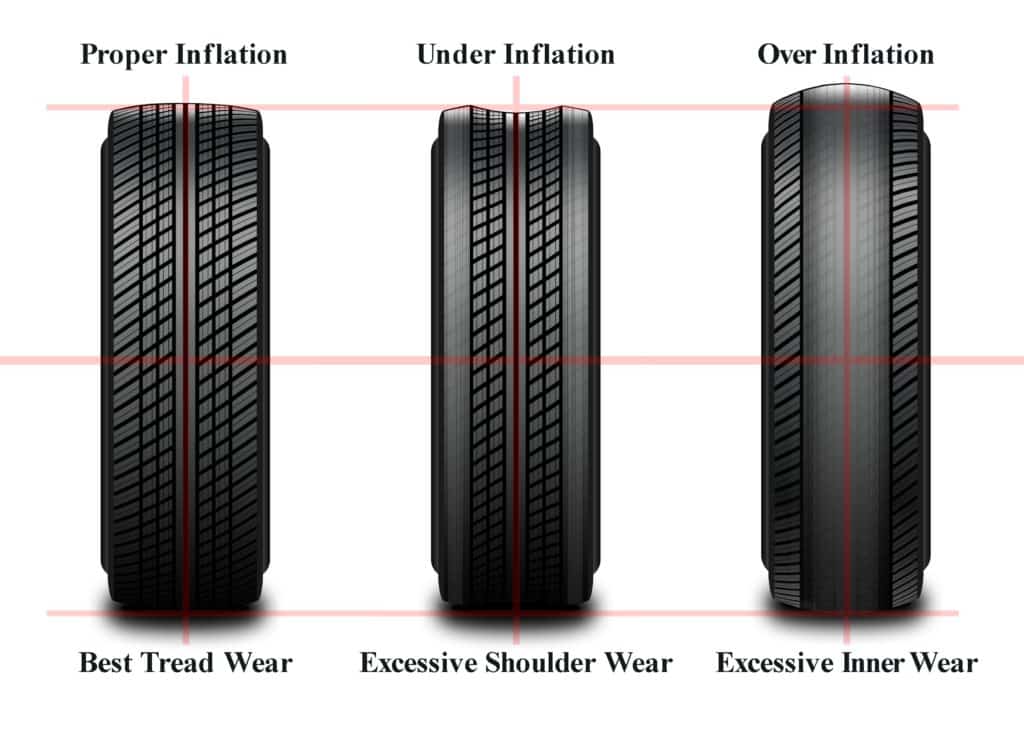When you lease a vehicle, it’s common to ask whether or not you need to replace the tires when you are done. In this guide, we are going to cover who is responsible for replacing tires on a lease car, when the correct time to replace them is, and how you can spot unusual wear and tear.
Who’s Responsible for Tires on a Leased Vehicle?
When you choose to lease a car, the condition of the tires is assessed when the vehicle is returned at the end of the contract. Independent inspectors and assessors will look at the condition, brand of tire fitted, and the tread wear level in accordance with the fair wear and tear guides.
When you return a lease it is generally expected that the tires are in “good condition”. Good condition generally translates to tread wear that is at least 6/32 of an inch on a tread depth gauge.
However, it’s not just at the end of the contract that maintenance for the tires is important. It’s also important throughout the entire duration of the lease. Driving with tires below the legal limit or with damaged tires is not just dangerous – it’s illegal. When tires show signs of damage, or wear and tear, it is your responsibility to maintain them properly and if required, replace them to ensure that they are roadworthy and safe.
Who Pays for Replacement Tires When Leasing a Car?
If the car that you have leased is not covered by a maintenance package, the cost of replacing the tires during the contract is your responsibility. If the tire failure is down to driver error, theft, or even vandalism, you still have to cover those costs. If you bring the vehicle back with poor condition tires, you can expect to have to pay for replacements tires.
Can I Bring the Car Back with Different Tires?
Leased cars can be returned with different tires, yes. Failures and unrepairable punctures do happen. The tires on the car may need to be replaced to ensure that they are always meeting legal guidelines.
The car does however, need to have premium brand tires when a least car is returned. They don’t have to be the same ones that originally were on it, but they do have to be of the right size for the vehicle.
While I don’t normally recommend only replacing one tire, a leased vehicle is an exception to that rule. If there is an issue with one tire, I try and find a matching tire of a passable condition.
Why You Should Replace The Tires Yourself
If you return the leased vehcile with unacceptable tires, they will charge you for replacements. If you replace the tires yourself before you return it, you can control the brand, quality, and price of the replacement tire.
Most dealerships are going to charge you for a top tier premium tire brand. By doing the tire swap before you return the lease, you can save a lot of money.
Leased Vehciles Perfect for Buying Used Tires
Leased vehciles are the perfect use case for buying used tires. You can find a used tire of a good enough quality with enough tread wear right before you return the lease. You can save even more money by getting used tires and still have the tire pass inspection on return.
When You Should Change the Tires
Tires are in contact with the road at all times so it makes sense that they would need to be replaced with wear and tear. The wear in use is completely normal. Excessive wear, however can actually result in the tires being damaged or worn more than they should.
Here are some of the things that you really need to look out for when it comes to deciding whether the wear and tear is your fault or not.
General Wear
When you are using the car every day there is general wear and tear that you need to consider. New tires are always supplied with an excess of 8/32 of inch of tread. As the car is used, friction and heat wear them down. You may see wear indicators or bars across the tire to tell you how far down it has worn. When the tread is level to these indicators or bars then they are at the legal limit of 2/32 of an inch and that’s when they need to be changed.
Alignment
When the pattern on the tire will wear down rapidly in certain areas more than others, it could be an indication you need an alignment. An alignment is an adjustment to your suspension.
Impact Damage
Was your leased car in an accident? Heavy impact can cause the sidewall of the tire to fail and lead the tire to a blowout. This isn’t your fault. But it is still requiring you to replace the tires on the leased vehicle before you bring it back.
Improperly Inflated
Inflation has to be at the correct pressure for your tire to be healthy on the road. Inside the car door or the fuel filter flap, you should be able to find the correct pressure for your car’s tires. This will also be documented in the manual. Take a note of the loading weight and passage numbers as they can change, but when the tire is under inflated the edges will take all of the load of the vehicle. This causes more wear and tear in the middle of the tide on the outside. The opposite is also true when the time is over inflated.
Replacing Tires on a Leased Vehicle – Conclusion
You are responsible for the tires on a leased vehcile. If you bring the vehicle back with tires that are not optimal, you may be charged to replace them. In my opinion getting used tires for a leased vehcile that you are returning is the perfect use case.

